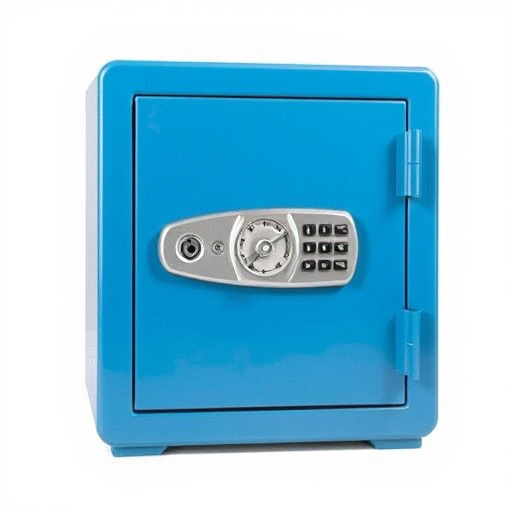Diversion safes offer discreet storage for valuables, integrating into everyday objects like books or plant pots to protect against theft. Opt for hidden spots combining accessibility and discretion, such as behind bookcases or within fake electrical outlets. Creative items like faux food or regular-looking electronics with hidden compartments blend into various settings for secure storage in drawers or under beds. Regularly reinforce hiding spots with locks, biometric access, and cameras to ensure peace of mind and maximize protection for valuable items.
Uncover the world of diversion safes—a clever way to conceal your valuables. These hidden compartments, disguised as everyday consumer goods, offer a unique solution for discreet storage. In this guide, we’ll explore where and how to hide these versatile hides, from creative placement in your home to the types of items they securely hold. Learn the art of maintaining and securing your secret stash, ensuring peace of mind and ultimate protection. Discover the best spots to stash your safe—the key to keeping your treasures out of sight and reach.
- Understanding Diversion Safes and Their Uses
- Choosing the Right Location for Your Hidden Compartment
- Types of Objects to Store in a Fake Consumer Good Safe
- Maintaining and Securing Your Secret Stash
Understanding Diversion Safes and Their Uses
Diversion safes, also known as hidden compartment safes or false bottom safes, are innovative security solutions designed to conceal valuable items within everyday objects. These clever devices offer a subtle yet effective way to protect assets, making them an attractive option for those seeking discreet storage. The primary use of diversion safes is to provide a safe haven for high-value consumer goods, such as jewelry, watches, and rare collectibles, while also serving as a safeguard against theft in homes, offices, or even during travel.
In terms of where to hide them, the beauty of these safes lies in their versatility. They can be incorporated into various everyday items like books, plant pots, light fixtures, or even kitchen appliances. For example, a false bottom in a decorative vase could conceal a small treasure trove, while a cleverly designed book safe might blend seamlessly on a bookshelf, keeping its contents out of sight and reach. This discretion is particularly valuable for fooling potential thieves, making it an effective strategy for safeguarding personal possessions.
Choosing the Right Location for Your Hidden Compartment
When selecting a location for your hidden compartment or diversion safe, it’s crucial to consider both accessibility and discretion. Ideal spots are areas that are out of view yet easily accessible to you but less likely to be noticed by others. Think creative—behind a bookcase, within a fake electrical outlet, or even built into a wall using a false panel.
Consider the type of goods you’re storing as well. For smaller items, a hidden compartment inside a desk drawer or under a floor mat might suffice. Larger diversions like fake food cans or potted plants with secret compartments require more space and careful placement to avoid suspicion. Remember, the key is to blend in—choosing a location that appears innocuous yet offers secure storage for your fakes.
Types of Objects to Store in a Fake Consumer Good Safe
When considering where to hide a diversion safe, especially within fake consumer goods, the possibilities are vast. Items that blend seamlessly into everyday life or can be easily overlooked are ideal choices. Small electronics like remote controls, power banks, and even faux food items like candy or cookies can serve as perfect hiding spots. These objects not only fit well in various locations but also draw minimal attention due to their ordinary appearance.
Additionally, clothing items like wallets, purses, or fake books with hollowed-out compartments offer creative options for securing valuable items. These everyday carriers allow you to hide diversions safes almost anywhere—in a drawer, under a bed, within a bookcase, or even disguised as part of a gift wrap collection. The key is to choose objects that complement your surroundings and don’t raise suspicion.
Maintaining and Securing Your Secret Stash
Maintaining and Securing Your Secret Stash
Once you’ve strategically placed your hidden compartment or diversion safe, it’s crucial to implement robust security measures. Choose a location that offers reasonable discretion but also easy access for you—a place where an unsuspecting eye might overlook it. Consider areas like bookcases, behind appliances, or under floorboards, where objects naturally blend in without raising suspicion. Regularly review your hiding spots; ensure they remain secure and accessible only to you.
Additionally, invest in high-quality locks and security devices designed for diversion safes. Keep backup keys in a safe location, and consider using biometric access or hidden cameras to deter intruders. Remember, the key to maintaining your secret stash is discretion and vigilance. By hiding your goods responsibly and securing them tightly, you can enjoy peace of mind knowing that your valued items are out of sight but safely protected.
Diversion safes, cleverly disguised as everyday consumer goods, offer an innovative way to secure valuable items or sensitive documents. By choosing the right location and understanding what objects they’re best suited for, you can create a hidden compartment that remains undetected. Whether it’s for precious metals, important papers, or emergency funds, these safes provide an extra layer of protection. Remember, when it comes to where to hide diversion safes, creativity and discretion are key.
